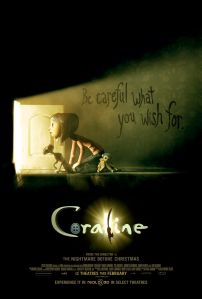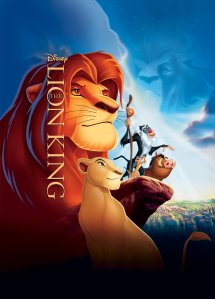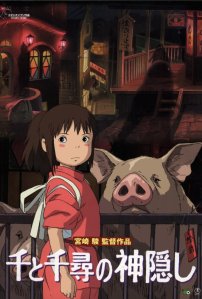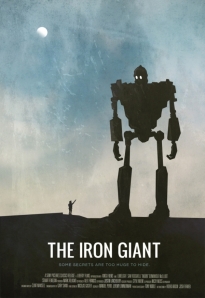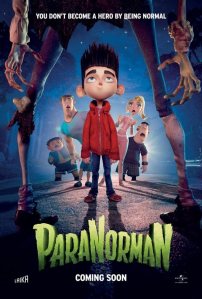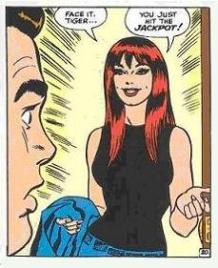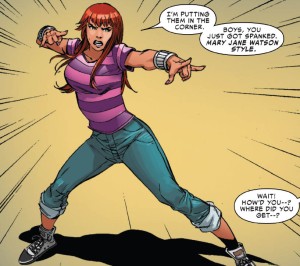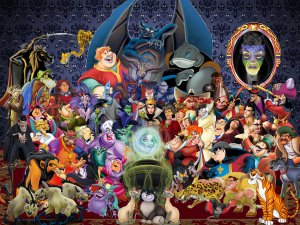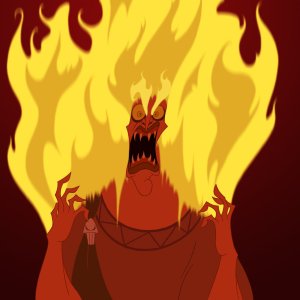At last, I can finally compile this list! Mind you, there are still a few films from 2013 I wish I could have watched but I’d have to wait till the end of this year to do so.
Comparing it to last year (see: Ten Best Films of 2012), there are a few noticeable traits in my selection I felt I should point:
- a straight-out horror made the cut (The Cabin in the Woods fell into horror-comedy territory)
- three foreign films (I’m expanding beyond Hollywood fare)
- two comic book adaptions that aren’t Marvel or Disney (and non-American)
Like with the previous list, it became apparent that I should employ the “Honourable Mentions” and “Runners-Up” categories again. The difference in the criteria is that the “Runners-Up” films just missed the cut while the “Honourable Mentions” are good but would possibly find a place between the numbers 20 and 30.
—————————————————————————
HONOURABLE MENTIONS: The Wolf of Wall Street, Kill Your Darlings, This is the End
RUNNERS-UP: Fruitvale Station, Enough Said, Upstream Colour, Captain Phillips, Spring Breakers, 12 Years A Slave
10) The Conjuring

The last good horror movie I watched was The Shining. Mind you, there has been a handful of passable horror fare in recent years, except past their shock value they slip from the mind (e.g. Sinister, Mama). The Conjuring is both old-school and innovative enough to feel fresh, a horror flick that scares, has a juicy premise and two respectable actors headlining. The “witch” plot may have been the central focus but I was fascinated just as much with the Annabelle subplot that opens the film and later plays a central role in delivering a good scare. Dolls are creepy. Period. Also, I’ll never be able to play a clapping game again after this.
09) Mud

Matthew McConaughey may have taken the Best Actor Oscar for Dallas Buyers Club but I find his best film in his recent resurgence will be Jeff Nichols’ Mud. Technically made in 2012, it only got a release the following year (so I count it as a 2013 film). The film follows two boys (played by Tye Sheridan and Jacob Lofland) who encounter Mud (Matt McConaughey), a strange man who lives in the boat stuck up a tree. Mud agrees to give them the boat he inhabits if they help him. It’s all so strange and funny and sad and heart-warming and heartbreaking at the same time and anchored by some great performances, especially from Tye Sheridan. It also reminds us why Reese Witherspoon was given that Best Actress Oscar all those years ago.
(Fun fact: Christopher Nolan cast McConaughey to headline Interstellar primarily based on his work in Mud)
08) Snowpiercer
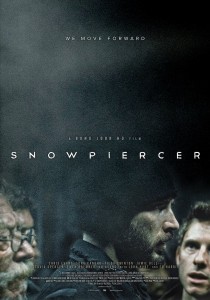
Hollywood, take note: this is how you can make a good comic book movie. Even though it’s a South Korean movie directed by Bong Joon-ho, the stars include Chris Evans, Kang-ho Sung, Go Ah-sung, Jamie Bell, Alison Pill, Tilda Swinton, Octavia Spencer, Ed Harris and John Hurt— a damn stellar line up. It’s ferocious, serious and it’s got a fantastic fight scene set within cramped quarters. Chris Evans proves he’s got the dramatic chops to go with the pretty face and is far grittier than he’s ever been (or at least, that I’ve seen). The film pulls some surprising punches, it’s got an intriguing premise (humanity surviving an apocalyptic wasteland aboard a train divided by class) and a delightfully scene-chewing villainous turn from Tilda Swinton that finds the right balance between campy and sinister.
07) All Is Lost
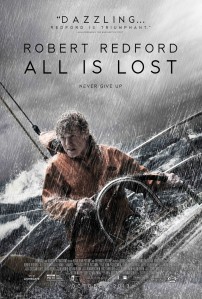
Robert Redford was a big name back in the day. The man also founded the Sundance Film Festival that allows small flicks like Little Miss Sunshine a chance at the big game. He’s been relatively quiet over the last decade although that isn’t going to last with the release of Captain America: The Winter Soldier. Before joining S.H.I.E.L.D, however, he was the sole star in this powerful near-silent movie by J.C. Chandor. I’m not exaggerating the “near-silent” part—there must be a total of ten lines uttered in the entire runtime. Think of it as a low-budget Life of Pi- without the tiger, 3D effects and dialogue. All Is Lost proves one thing: age be damned, Robert Redford is still brilliant even when just staring at the screen wordlessly. Kristen Stewart could learn a lot from this film.
06) Ernest et Célestine

Frozen may have picked up the award for Best Animated Feature but (personal opinion) it certainly didn’t deserve it. Any other candidate was better but my pick was this delightful French film of a friendship between a mouse and a bear. The visuals are beautiful in its simplicity and have a watercolour-esque feel to the entire proceedings. There’s an English dub on the way but somehow, I enjoy the original version it was made in. It’s also disconcerting to realise how rare it is to find an animated feature nowadays that actually focuses on themes of genuine friendship without involving even the faintest hint of a romance. Ah well, c’est la vie.
05) The Spectacular Now/Blue Is The Warmest Colour


Thematically, it feels fitting to have these two films in a tie. I know that’s a bit against the rules but can’t be helped.
I kept pitching The Spectacular Now to people as being 2013’s The Perks of Being a Wallflower. I couldn’t be further from the truth. The Spectacular Now is more mature in its approach and (I hate to use the word but I can’t think of a better one) real in the matters it deals with. It also features two helluva performances from Shailene Woodley and Miles Teller. A massive of the book it is based on, this is one of the few adaptations I’m glad made a few changes, particularly regarding the ending. If I had to compare it to a past film? I’d say it is this year’s Say Anything.
Blue Is The Warmest Colour, like The Spectacular Now, is also an exploration into the trials and tribulations of adolescence and sexuality and what it feels like to grow confused and whatnot— except it’s set in France and about a lesbian. The movie might be most memorable for the drawn-out sex scenes bordering on uncomfortable but Adèle Exarchopoulos and Léa Seydoux thankfully keep audiences spellbound with chemistry that is charming and electrifying that helps the three hours to pass by without dragging.
04) Her
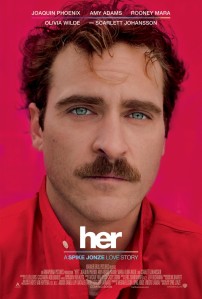
Her has a pretty ridiculous concept: “a man falls in love with his Operating System”. If I’m not mistaken, a similar premise was explored for laughs in an episode of The Big Bang Theory. Her doesn’t play it for jokes— that isn’t to say it’s not funny. It succeeds by taking the universe, the premise and the characters in this little sandbox with all seriousness. Spike Jonze has proved his ability in the past to tackle quirky fare with Being John Malkovich and Where The Wild Things Are, so it seems fitting that he’d be the one to pull this off, deservingly rewarded for his efforts with a Best Original Screenplay Oscar. Simply put: it’s a moving funny little affair with a lot of heart.
Which is why it is criminal that Joaquin Phoenix and Scarlett Johannson were ignored for their work. Johannson, in particular, deserves to be lauded for her convincing us exactly why it was so easy for Theodore Twombly to fall in love with a disembodied voice. Phenomenal stuff, this.
03) The World’s End
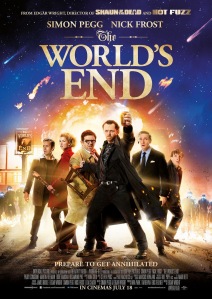
The concluding third chapter in the quirky, comic-fuelled Three Flavours Cornetto trilogy from the brilliant minds of Edgar Wright and Simon Pegg is bigger and bolder than Shaun of the Dead and Hot Fuzz (spoilers: TWE has aliens!), yet impossibly retaining the humour and all the elements that made the previous instalments such a hit! The emotional component is probably the most profound, thanks largely in part to scene-stealer Simon Pegg, though he nearly loses the limelight to co-stars Nick Frost, Paddy Considine, Edie Marsan, Martin Freeman and Rosamund Pike. They even managed to rope in yet another James Bond actor (Pierce Brosnan this time)! The World’s End is wildly wacky and hilarious and certifies Edgar Wright proving he had the chops to craft memorable flicks— which is why Ant-Man will no doubt be one of the best superhero films next year.
02) Before Midnight
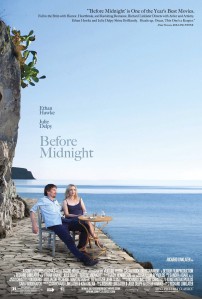
Yes, I loved this movie and I am not ashamed to admit it. Also, I am not alone in this consensus, so you might as get over the shock that I consider a romantic drama to be one of the best films of the year. Doesn’t hurt that I am a massive fan of Richard Linklater— you might remember his other work like School of Rock.
Before Midnight is (so far) the third instalment in this unlikely trilogy, picking up nine-years after the cliff hanger ending of Before Sunset, both in story and real-time. There’s new stuff this time around: for starters, more characters! Nudity! Middle aged issues (no, seriously)! But all this proves necessary, contributing to the organic aesthetic depicting the progress of Jesse’s and Celine’s relationship over time and how the initial doe-eyed romance (fondly referred to as “the honeymoon phase” of any relationship) of first encounters must give way to the reality of life. Even the greatest love stories can fizzle out— the trick, as countless testimonies and this movie proves, is to not let it die.
I’m still holding out on the hope that Richard Linklater, Ethan Hawke and Julie Delpy revisit this universe for another outing: it’s the rare series which deserves to continue not for money but for the experience of growing up with these characters, dropping and checking in every ten years or so to catch up with them like visiting old friends.
01) Gravity/Short Term 12

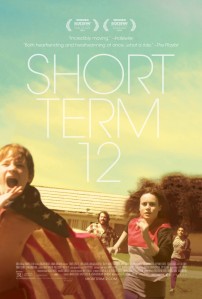
Can’t be helped: I found Gravity and Short Term 12 to be the best films of 2013 for vastly different reasons, so it’s a tie. One is a marvellous, jaw-dropping visual fest (the fifteen minute single-take opening and the rousing last ten minutes alone are worth watching in 3D). The other is a small yet moving stirring drama that packs a very solid punch.
Gravity pushed the boundaries of what could be done with technology and 3D and to say the outcome is overwhelming is the understatement of the year— I actually jumped out of my seat, triumphant fist in the air, when Alfonso Cuarón won the Best Director Oscar.
Short Term 12, conversely, was grossly snubbed by the Academy Awards. Part of me blames the fact that most of the nominees were selected from the second half of the 2013 calendar. Very sad— Brie Larson delivers a nuanced performance that could give Cate Blanchett a run for her money, the rest of the cast is equally wonderful and it simply exceeds expectations from start to finish as a whole.
————————————————————-
What did you think were the best films of 2013, dear Reader? Leave your comments below!

